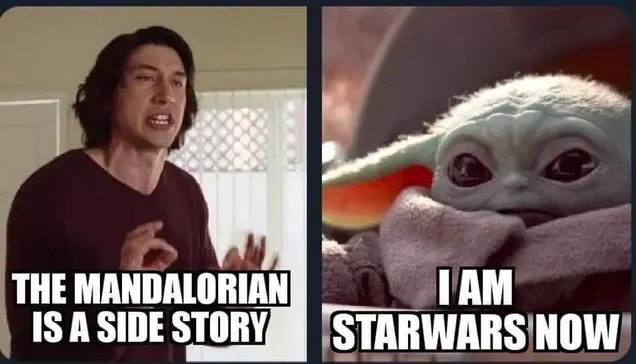Chess? Deep Blue? How in the hell is this about marketing? Not like I care, I’m going to read this anyway.
Chess? Deep Blue? How in the hell is this about marketing? Not like I care, I’m going to read this anyway.
Just like IBM’s Deep Blue beat chess champion Garry Kasparov, forever changing the way we think about AI…
…the internet and social media forever changed the way we think about the sales process.

Admittedly, the battle between Deep Blue and Kasparov was way hairier and complex then can be captured in this copy. (After all, chess competitions aren’t just about technique, it’s about psychology. Wired delivers a great article on this epic milestone here.)
Though a computer beating a man at chess these days won’t make the nightly news, in 1997, it was not only mind-blowing, but it altered our notions about what computers are capable of.
These days, many computer programs can operate in the background like a techie version of the autonomic nervous system. We’re not aware. We don’t notice.
Oftentimes, it’s better that way. (Who wants to consciously think about blinking their eyes every third of a second? Definitely, not me.)
The same thing is happening, albeit in a slightly different way, in marketing.
Today, as much as two-thirds of your marketing is happening without you, via social media, word-of-mouth, customer-driven content, and online reviews.
To top it off, all of these interactions with your brand are happening even before a prospective customer ever talks with a salesperson (or anyone on your team for that matter).
This has its pros and cons. Pros are that parts of your marketing strategy can drive themselves. Cons are that parts of your marketing strategy can drive themselves. (The main distinguishing factor is who’s doing the driving? Is it a self-driving car or is it the 16 year old neighbor who just got their license and likes to do 60 mph while rocking out to heavy metal at 4 in the morning…)
As marketing becomes more and more synonymous with your sales efforts (think attraction rather than promotion, conversation rather than monologue and relationship rather transaction), all of the time, energy and money you invest in it is worth it.
Primarily because your marketing efforts value will continue to increase.
Unfortunately, none of us are the Kardashians (except the Kardashians, themselves), so we have to work with a limited marketing budget.
BUT, don’t despair. You can still market effectively even with a frugal marketing budget.
Just follow these five strategies.
1. Do Your (Market) Research – (in the right galaxy)
It goes without saying that a little research can save you a mile.
How can you market and sell without first knowing who your clients are? Or Figuring out what their needs are? Or an in-depth understanding of what’s causing them their pain and their problems?
Every direct mail piece, every online ad impression, every piece of content that you create needs to speak to your right audience. Otherwise, you’re just wasting money. (And in my opinion, you’d probably have way more fun throwing that money at a trip to space via the Virgin Galactic. Embezzlement charges be damned.)

This doesn’t need to be expensive, (unlike Buggati’s gorgeous La Voiture Noire).
Easy ways to get more information about your target audience is to gather the intel yourself.
Try reaching out to your current customers and ask them questions about their experiences with your products and services.
If you’d rather talk then email any day, then by all means call them. Otherwise, send them a thank you note for being such a great client and include a feedback survey in it (SurveyMonkey’s a great tool).
You can also mine your Google and social media accounts for any audience analytics that might reveal more about the people who are visiting your site.
It’s true that all of these metrics can start to seem like a Dr. Seuss book with a hangover. So, either watch a tutorial on YouTube (like this one) to get an overview of what to look for and /or consult with an marketing analytics expert to fully understand and capture your data insights.
2. Write (or Buy) Quality Content – (Do whatever you gotta do to get you some pronto.)
I’ve said it before, and Baby Yoda (speaking on behalf of content everywhere) will say it again…

This is content’s place in the universe. Like Baby Yoda, content IS marketing now.
You might be like, “WHY?!! Does the world really need more words and information right now? Haven’t you been telling me how saturated and noisy the world is (and that I should be getting down and dirty with rough drafts)? WHO ARE YOU?? WHAT UNIVERSE AM I IN?”
Yep. The world’s changing fast, my friend and staying relevant in today’s world is exactly the marketing feat, I’m setting you up for.
Let me let you in on a little secret here. The key to staying relevant is to get really good at communicating (with words, images, videos, I’m talking the whole multi-media approach here) in a clear, direct and friendly way.
Never forget, not only does content reign supreme over the galaxy, but you’re just a guide (Obi-Wan Kenobi) to your client’s (Luke Skywalker).

Your clients get the lightsaber because they’re the hero. You watch them to make sure they don’t hurt themselves on their quest to conquer evil.
Let’s get down to brass and tacks. Here’s what compelling, relevant content does for your company:
- Content and Search Engine Optimization (SEO) go hand in hand.
Though ’ll dig into SEO later in this educational experience, I want to give you a brief definition to help you anchor it in your brain as an actual thing instead of just another marketing UFO.
First of all, SEO is one of those marketing strategies whose principles change over time. There will never be an absolute, nail it in the floor till fire, wind or water take it down, SEO. SEO is more
shifting tectonic plates and less Roman concrete Colosseum.
Essentially, SEO is a bunch of techniques that help place your website higher in search results on various search engines like Google, Yahoo!, and Bing. These techniques change over time in response to search algorithms that search engine providers are constantly changing. Fun, right? (It keeps me on my toes.)
There’s a ton of SEO techniques (again, more on this later), but a fundamental concept I was to leave you with is that your content needs to include words that people use to search for products and services like you. These “keywords” allow the search engines to index (like cataloged cards in a library) your page so people can find and check out your book (e.g. find your website and purchase your product and/or hire you). The main point is that SEO helps your website get found by increasing the number of pages (and opportunities) that can be found in a search query (translating to higher SEO rankings).
Try putting yourself in the shoes of your clients trying to find products and services they need that are essentially yours and your competitors. Or think of a recent thing you wanted to buy but couldn’t find even though you tried entering a number of different search terms.
Let’s take the fabulous memes that heavily populate this educational email series as an example. There’s an art to finding the right one that illustrates what I’m trying to say or captures the sentiments I’m trying to convey. Though I have impressed myself with how much better I’m getting at finding these little gold nuggets, I do get tangled up when I know one must exist that fits what I’m trying to say. Like Obi Wan Kenobi and Luke Skywalker, wasn’t there a scene in the film that perfectly summarizes the nature of their mentorship to the hero relationship? WHY CAN’T I FIND THE PERFECT ONE?!
Oh wait, it’s because memers sense of humor is mostly sardonic, sarcastic and at times, very very dark. I could just make my own…or I could just give up. I decide based on how valuable it is to elucidate my teachings with entertainment and what else is on my plate of things to do.
YET, I’m often left wondering why these frickin’ brilliant memers don’t have a better grasp of their SEO so their sites are better indexed and prevent me from having to chase them all over Google, Reddit, Facebook and Pinterest? WHY DON’T THEY MAKE IT EASIER FOR ME TO PROFIT FROM THEIR HILARITY AND BRILLIANCE? In a galaxy far, far away….
And I’m back,
Lastly, if you prefer watching videos, here’s Neil Patel talking about SEO here.
- Great content lowers your website bounce rate,
Basically, bounce rate is when a viewer lands on your website, hangs out for a millisecond and is like, “Peace out,” and leaves your site.
Obviously, this isn’t good for sales. Imagine if your company had a storefront and about 20 out of the 40 people who visited your store to buy a pair of pants, walked it, took one look, was like, “Yeah, bye” turned around and walked out? You’d be desperately figuring out how to change that pattern, right?
Maybe that 20-year old man didn’t want maternity pants (and that’s all you sold). “Well, crap, why’d he even come in the store?” Maybe sponsoring that skate-boarding contest wasn’t the right way to connect with your audience…
It’s the same with your website. The longer you can engage (inform, entertain, entice) your right potential client to stick around on your website, your chances of converting them to a client are greatly improved. Enough said there.
- Content can act like a 24/7 salesperson.
Of course, your salespeople (if you have them) are great at sealing the deal. But most of them can’t be online monitoring your website 24/7 in case a client comes by. Content is a great substitute until your salespeople are available.
It expresses your brand’s values and voice. It outlines your products and services clearly. It builds trust while demonstrating that you’re an expert in the field. It can engage and perform while clients want in what is essentially the waiting room of your building until you (or your salesperson) can step in.
In addition, content helps you stand out among your competition. Sometimes the biggest difference between your competitor and you is how you talk to, relate with and serve your clients. And content is the key way to make this obvious and distinguishable to a prospect.
Lastly, if you have a limited marketing budget, invest most of your dollars in the content category.
This is truly the foundation that enables the rest of marketing’s strategies and tools to do what they need to do – engage prospects, befriend them, show them what your services and products are made of, solve their problems, convert them for life and ka-ching, right?
3. Distribution – Publishing (Introducing Your Content to the World)
Ultimately, where you distribute (e.g. publish) your content will depend on your marketing goals and which audience needs to see it. So, this is just an overview of your possibilities. Review them with your sales team and/or marketing consultant.
- Social media and Social Media Groups
- Industry blogs or magazines
- Direct mail
- Email marketing
- Affiliate programs and services
- Webinars
- Online directories
4. Videos with Humans are it right Now and will continue to be in the Future
If you spend even a few minutes on social media every day, you’ll quickly notice how video is taking over as a preferred method of content. Not only that, if you’ll see how FB and YouTube have made it possible for videos to follow you around and keep playing as you click on other things!
Professional video is hella cash heavy (e.g. diamond expensive). BUT, you don’t need professional video with all the high end digital cameras, lights, actors and producers.
“Thank god!”
Yes, indeed. Today’s consumers, again, prefer authentic (e.g. real, practical experiences that relates to their experiences). This means that when it comes to video, since everyone’s in on making and sharing their own (because it’s so fun), they don’t expect and don’t necessarily want professional level videos, which end up reading as fake.
Again, imperfect, on the fly, in the moment videos (kind of like having a conversation in real life) is truly what appeals the most.
So, what do you do with this? Just grab your phone, imagine your customer or prospect sitting in front of you (you can even have a co-worker sit-in for the “imaginary” client, which makes it easier to talk like a real person instead of a stiff, expressionless cardboard cutout.)
Hey, we’re not all meant to be actors (another thank god here) but if you’re not feeling the chemistry spark when you’re talking to the camera, your audience isn’t going to feel it either. So, you can hire an actor with TV experience to help with that or you can hand it off to another person on your team, like a sales person who’s typically highly excitable.
5. Content Hath No Expiration Date (if you plan wisely), so, Reuse, Recycle, Repurpose with Glee
There is no rule in marketing that says, “Thou must never duplicate!”
Let’s talk about grant writing for non-profits for a moment. Obviously, they’re limited on time, money, volunteers, etc. Yet, often the very thing that’s going to make them much needed cash, a grant writer, is typically filled by a volunteer with or without experience (and not always the most effective).
So, typically what grant writers do is they invest heavily in comprehensively writing the first round of major grants. This takes time and money. However, at the end of this period, they have what they call a content library loaded with material that they can recycle and reuse for other grants they’ve never applied for before.
This content library saves them loads of time on re-writing a new grant each and every time, often lowering the time needed from weeks to days and sometimes even hours.
You might already have a content library, albeit an unorganized and not very useful one. This is money just lying on the shelf in some dusty back closet in the pocket of that leather jacket you haven’t worn since your clubbing days.
Time to dust off those previous marketing campaigns, blogs, podcasts, videos, etc. and assess what still has value (can be repurposed) and what can be tossed.
Then, going forward you can plan to invest in high quality, compelling content pieces, kinda like you would when building out the essential pieces of your wardrobe (why buy 200 million T-shirts over your life when maybe spending more on a quality one will get more use while also creating less waste).
Lastly, content essentially feeds the SEO cookie monster (give me more or I won’t tell people you exist! Gawd, it sounds like Sesame Street really condoned blackmail with that character, didn’t they??). Once you consent to feeding him the cookies, he’s going to return to you and be like, “we got a good thing going here, don’t we…?”

Need More Tips for Marketing on a Budget?
(Okay, duh, who doesn’t.)
Here are other things to try if your main limit to great marketing is your budget:
- Collaborate with others. Have guest bloggers on your website and offer to be a guest blogger on other sites in your industry. This is not only fun but it typically leads to network marketing (e.g. becoming the go to reference for your products and services with a particular group of people).
- Harness the power of LinkedIn. If you’re underutilizing your LinkedIn channel then you’re missing a great opportunity. Request that your marketing team (if they haven’t already) joined relevant groups where they can add comments, connect with others, and share your content.
- Create brand ambassadors. Figure out which clients love you the most and also love to talk about what they love! These folks can serve as your brand ambassadors who love surfing their social channels, checking in on their network (personal and work) and make referrals for people who could benefit from your products and services.
These types of referrals are pure gold since most people buy based on recommendations from people they know.
You can still effectively market your solutions without a huge marketing budget so please feel empowered to try out the tools and strategies I discussed. If you feel overwhelmed on how to do this, please don’t hesitate to reach out to me. I’m skilled at creatively working with IT companies on a budget.
Next up I’ll be discussing marketing automation and whether to Hubspot or Not? I just gotta say.
You’re doing great. I’m so glad you’re here and thank you for giving me this opportunity to share what I know.
Got Marketing Questions? We can help.
By clicking this button, you submit your information to Scott Growth Strategies, who may use it to communicate with you regarding this and other services.
